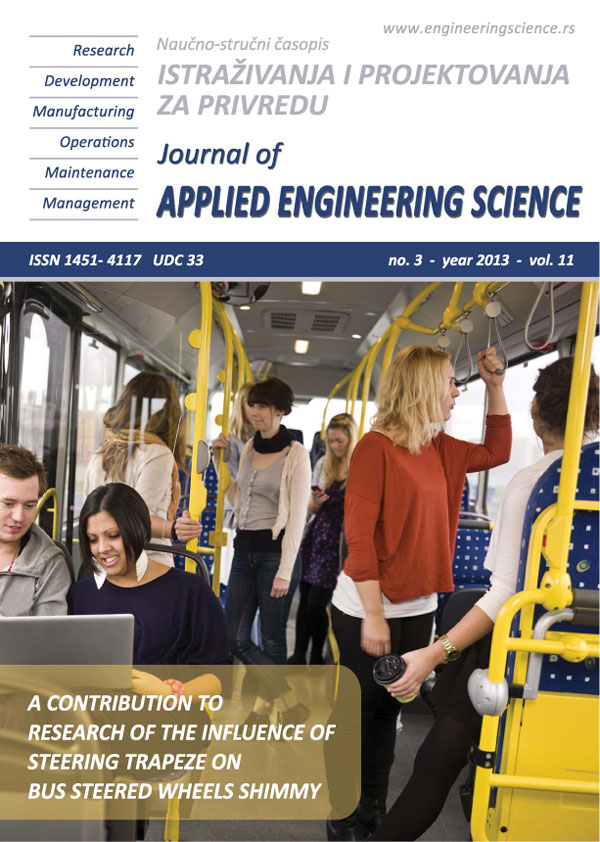THE PRODUCTION CYCLE TIME IN SERIAL PRODUCTION: Reduction of the Duration in Metal Processing Industry Case
Abstract
The most relevant factor which affects the production cycle time per unit is the size of a series. The production cycle mean value for the groups formed according to the number of units in a series tpcu moves along the hyperbolic function which has asymptote c, tpcu = c + b/n, and, mathematically, these groups do not behave as strata, which means they are linked to deterministic factors of technology and number of units/series. This paper presents the application of original model on reduction in the duration of the production cycle time in serial production – case metal processing industry.
References
Barnes, R. (1957). Work Sampling, 2 nd edn. New York: Wiley.
Brkić-Spasojević, V., Klarin, M., & Curović, D. (2009). Dimenzije menadžmenta kvalitetom isporučioca u industrijskim preduzećima Srbije. Journal of Applied Engineering Science, 7(23-24), 67-71.
Čala, I., Klarin, M., & Radojčić, M. (2011). Development of a Stohastic model for determing the elements of production cycle time and their optimization for serial production in Metal processing industry and recycling processes. Journal of Engineering Management and Competitiveness (JEMC), 1(1-2), 21-25.
Elnekave, M., & Gilad, J. (2006). Rapid video-based analysis for advanced work measurment. Int. Journal of Production research, 44(2), 271-290.
Jovanovic, J., Milanovic, D., Radovic, M., & Ðukic, R. (2012). Investigations of Time and Economic Dimensions of the Complex Product Production Cycle. Journal of Applied Engineering Science, 10(3), 153-160.
Klarin, M.M., Cvijanović, M.J., & Spasojević-Brkić, K.V. (2000). The shift level of the utilization of capacity as the stochastic variable in work sampling. International Journal of Production Research, 38(12), 2643-2651.
Klarin, M.M., Milanović, D.D., Misita, M., Spasojević-Brkić, K.V., & Jovanović, A. (2010). A method to assess capacity utilization in short cycle functional layouts. Proceedings of the Institution of Mechanical Engineers Part E-Journal of Process Mechanical Engineering, 224(E1), 49-58.
Maynard, H.B. (1971). Industrial Engineering Handbook. Pittsburgh. PA: McGraw-Hill.
Moder, J.J. (1980). Selection of work sampling observation times – Part I: Stratified sampling. AIIE Transactions, 12 (1), 23-31.
Niebel, W.B. (1980). Time Study, Handbook of Industrial Engineering. Salvendy G. (Eds). New York: Wiley.
Richardson, W.J., & Eleanor, S.P. (1982). Work Sampling, Handbook of Industrial Engineering, Salvendi G. (Eds.). New York: Wiley
Tippett, L.H.C. (1929). Statistical Methods in Textile Research: The Analysis od Complex Variations. Shirley Institute Memoirs, 8, 175-190.
Tippett, L.H.C. (1935). Some Applications of Statistical Methods to the Study od Variation of Quality in the Production of Cotton Yam. Supplement to the Journal of the Royal Statistical Society, II, 27-62.
Tippett, L.H.C. (1936). Applications of Statistical Methods to the Control of Quality in Industrial Production. Transactions of the Manchester Statistical Society, 1-32.

